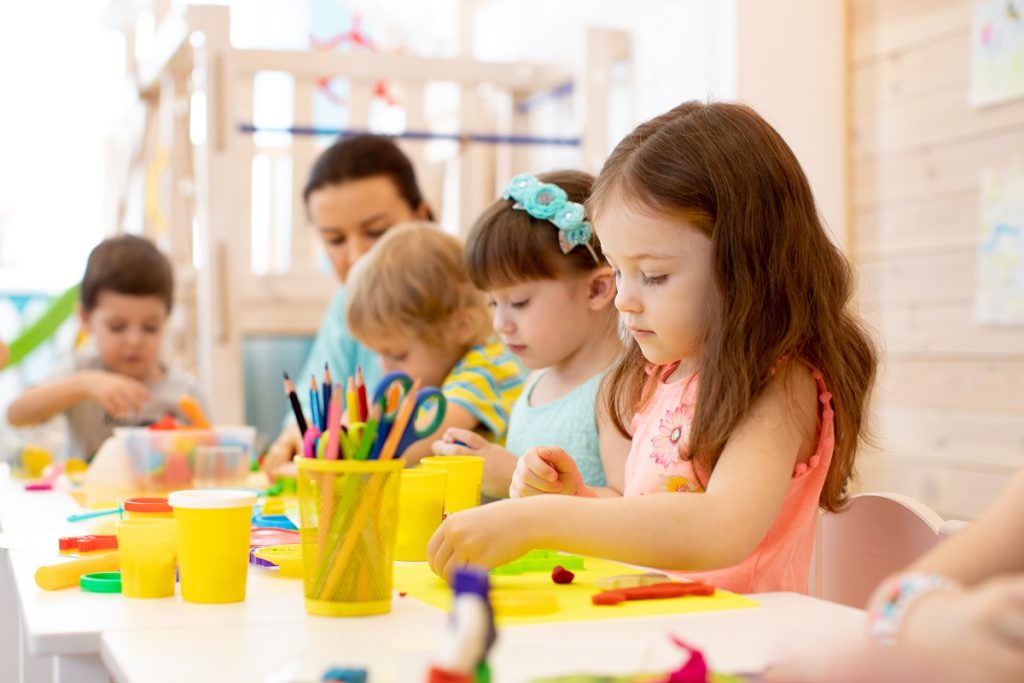In the evolving landscape of early childhood education, emphasizing creativity and curiosity is of utmost importance. Children who embark on their educational journey in an environment rich in creative exploration and curiosity are primed for academic achievements and a lifetime of personal and intellectual growth. Educators and caregivers have the unique opportunity to influence young learners profoundly by providing them the tools to think critically and explore independently.
This approach to preschool education transcends traditional learning techniques, focusing on children’s holistic growth. It aims to produce well-rounded individuals capable of innovative problem-solving and adaptability in the face of future challenges. By creating spaces where creativity and curiosity are encouraged, educators can inspire children to learn more intensely, ensuring they remain engaged and motivated throughout their educational journey.
Table of Contents
- The Importance of Creativity in Early Childhood
- Encouraging Curiosity: A Key to Lifelong Learning
- Integrating Play into Educational Activities
- Building a Supportive Learning Environment
- The Role of Teachers and Caregivers
- Involving Families in the Learning Process
- Evaluating Success in Preschool Programs
- Resources for Enhancing Preschool Education
The Importance of Creativity in Early Childhood
Creativity is a critical component of early childhood development. It empowers children to imagine and invent and to problem-solve effectively. When skillfully integrated into a preschool curriculum, these elements act as essential building blocks shaping the future of imaginative learning and inquiry-driven minds. During these formative years, children who engage in creative activities develop unique ways of thinking, enabling them to see multiple solutions to a problem. This form of mental flexibility becomes an invaluable skill in adulthood. Creative expression through art, music, and storytelling can also enhance emotional intelligence, allowing children to navigate their emotions and interpret the feelings of others with finesse.
Encouraging Curiosity: A Key to Lifelong Learning
Curiosity is an innate quality in children, and when nurtured, it can become a powerful driver of learning. Encouraging curiosity involves creating an atmosphere where questions are welcomed, and exploration is celebrated. It is about making learning a journey rather than a destination. According to the Child Development Institute, children urged to ask questions and pursue knowledge tend to excel academically and remain enthusiastic about learning. This foundational curiosity promotes intellectual growth and helps maintain a keen interest in understanding the world. In settings like a Christian preschool, this nurturing environment is often enriched with values and teachings that further inspire children’s natural curiosity, fostering both their educational and spiritual development.
Integrating Play into Educational Activities
Play is not just a leisure activity but a vital educational tool that contributes significantly to child development. Through play, children develop a sense of teamwork, negotiation skills, and creative thinking. Educators can incorporate playful methodologies, such as role-playing games and interactive storytelling, to reinforce lessons and concepts. This playful environment encourages active engagement, making it easier for children to absorb and apply new information, leading to a richer educational experience.
Building a Supportive Learning Environment
Creating a supportive learning environment is crucial for fostering creativity and curiosity in young learners. Classrooms should be designed to be safe, welcoming spaces that encourage freedom of expression. An ideal classroom setup intrigues the senses and fosters an open-minded atmosphere where students feel comfortable experimenting and expressing their ideas. By providing diverse resources and arranging the classroom to invite exploration, educators can stimulate a child’s imagination and provoke their curiosity, making the school experience rewarding and impactful.
The Role of Teachers and Caregivers
Teachers and caregivers have a profound impact on nurturing a child’s development. Through thoughtful planning and interactive teaching methods, they can inspire curiosity and creativity. Educators equipped with specialized training in early childhood education, as highlighted by the Brookings Institution, are better positioned to understand and meet children’s developmental needs. They can act as role models, guiding young minds through challenges and discoveries and encouraging children to flourish.
Involving Families in the Learning Process
Families play a pivotal role in a child’s educational experience. Engaging families in school activities creates a seamless connection between home and preschool, reinforcing the learning objectives set by educators. Regular family participation in academic events and home-based activities can enhance the support network for children, cementing the knowledge acquired in the classroom through real-life applications. This collaboration strengthens the child’s learning process and builds a community around education.
Evaluating Success in Preschool Programs
Measuring the success of preschool programs involves a holistic approach beyond academic evaluations. Success should include social, emotional, and intellectual growth. When assessing programs, it is essential to consider how well children can express themselves, engage with peers, and manage emotions. Traditional metrics such as literacy and numeracy skills remain crucial. However, these less tangible, equally vital emotional and social benchmarks should be balanced to ensure a comprehensive assessment of a child’s development.
Resources for Enhancing Preschool Education
A multitude of resources is available to enhance and support preschool education. Online platforms and community programs offer innovative tools that can significantly broaden the educational experience for both educators and students. Resources such as local workshops and collaborative networks extend opportunities for continued learning and supportive interactions among teachers, parents, and children. By leveraging these resources, educators can create an enriched curriculum that meets the varied needs of young learners, ensuring a dynamic and effective educational foundation.

